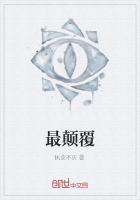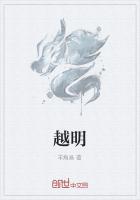2. The Solar Theory ofthe Fire-festivals IN AN EARLIER part of this work we saw that savages resort to charms for making sunshine, and it would be no wonder if primitive man in Europe did the same. Indeed, when we consider the cold and cloudy climate of Europe during a great part of the year, we shall find it natural that sun-charms should have played a much more prominent part among the superstitious practices of European peoples than among those of savages who live nearer the equator and who consequently are apt to get in the course of nature more sunshine than they want. This view of the festivals may be supported by various arguments drawn partly from their dates, partly from the nature of the rites, and partly from the influence which they are believed to exert upon the weather and on vegetation.
First, in regard to the dates of the festivals it can be no mere accident that two of the most important and widely spread of the festivals are timed to coincide more or less exactly with the summer and winter solstices, that is, with the two turning-points in the sun's apparent course in the sky when he reaches respectively his highest and his lowest elevation at noon. Indeed with respect to the midwinter celebration of Christmas we are not left to conjecture; we know from the express testimony of the ancients that it was instituted by the church to supersede an old heathen festival of the birth of the sun, which was apparently conceived to be born again on the shortest day of the year, after which his light and heat were seen to grow till they attained their full maturity at midsummer. Therefore it is no very far-fetched conjecture to suppose that the Yule log, which figures so prominently in the popular celebration of Christmas, was originally designed to help the labouring sun of midwinter to rekindle his seemingly expiring light.
Not only the date of some of the festivals but the manner of their celebration suggests a conscious imitation of the sun. The custom of rolling a burning wheel down a hill, which is often observed at these ceremonies, might well pass for an imitation of the sun's course in the sky, and the imitation would be especially appropriate on Midsummer Day when the sun's annual declension begins. Indeed the custom has been thus interpreted by some of those who have recorded it. Not less graphic, it may be said, is the mimicry of his apparent revolution by swinging a burning tar-barrel round a pole.
Again, the common practice of throwing fiery discs, sometimes expressly said to be shaped like suns, into the air at the festivals may well be a piece of imitative magic. In these, as in so many cases, the magic force may be supposed to take effect through mimicry or sympathy: by imitating the desired result you actually produce it: by counterfeiting the sun's progress through the heavens you really help the luminary to pursue his celestial journey with punctuality and despatch. The name fire of heaven, by which the midsummer fire is sometimes popularly known, clearly implies a consciousness of a connexion between the earthly and the heavenly flame.
Again, the manner in which the fire appears to have been originally kindled on these occasions has been alleged in support of the view that it was intended to be a mock-sun. As some scholars have perceived, it is highly probable that at the periodic festivals in former times fire was universally obtained by the friction of two pieces of wood. It is still so procured in some places both at the Easter and the Midsummer festivals, and it is expressly said to have been formerly so procured at the Beltane celebration both in Scotland and Wales. But what makes it nearly certain that this was once the invariable mode of kindling the fire at these periodic festivals is the analogy of the needfire, which has almost always been produced by the friction of wood, and sometimes by the revolution of a wheel. It is a plausible conjecture that the wheel employed for this purpose represents the sun, and if the fires at the regularly recurring celebrations were formerly produced in the same way, it might be regarded as a confirmation of the view that they were originally sun-charms. In point of fact there is, as Kuhn has indicated, some evidence to show that the midsummer fire was originally thus produced. We have seen that many Hungarian swine-herds make fire on Midsummer Eve by rotating a wheel round a wooden axle wrapt in hemp, and that they drive their pigs through the fire thus made. At Obermedlingen, in Swabia, the fire of heaven, as it was called, was made on St. Vitus's Day (the fifteenth of June) by igniting a cart-wheel, which, smeared with pitch and plaited with straw, was fastened on a pole twelve feet high, the top of the pole being inserted in the nave of the wheel. This fire was made on the summit of a mountain, and as the flame ascended, the people uttered a set form of words, with eyes and arms directed heavenward. Here the fixing of a wheel on a pole and igniting it suggests that originally the fire was produced, as in the case of the need-fire, by the revolution of a wheel. The day on which the ceremony takes place (the fifteenth of June) is near midsummer; and we have seen that in Masuren fire is, or used to be, actually made on Midsummer Day by turning a wheel rapidly about an oaken pole, though it is not said that the new fire so obtained is used to light a bonfire. However, we must bear in mind that in all such cases the use of a wheel may be merely a mechanical device to facilitate the operation of fire-making by increasing the friction; it need not have any symbolical significance.















